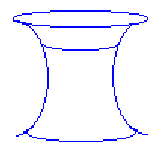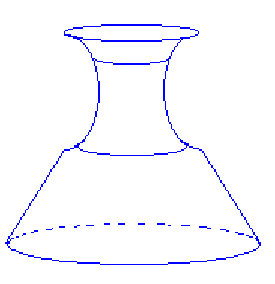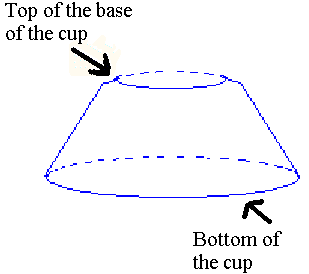AutoCAD and Geometry
 
|
Example
Plan
|
|
|
This was the drawing that I made. It's a In the Sketchpad files, I look at the
base of |
Next, I divided my design into two sections.
|
|
 |
|
|
of a circle rotated around an exterior point. |
Then, I wanted to find out what the specifications for my design would be. I used Geometer's Sketchpad and created a file that would allow me to play with the dimensions. One thing I had to be sure of was that it would hold at least 16 ounces. So I went to Ed's Metric Conversion Chart to figure out how many cubic centimeters were in an ounce. This was a little tricky, since Ed's chart only gave me the relationship between liters and ounces. But I figured it out. Turns out there are just a little over 473 cubic centimeters in 16 ounces.
NOTE (1/10/00): Ed's Metric Conversion chart
is no longer available, but a new ad hoc converter has been made by Jim
Dildine. It's better suited to this project.
Check it out at https://mste.illinois.edu/dildine/cad/volume.html
Here is the Sketchpad file that I created to determine the dimensions of my cup. It is also saved as a Java Sketchpad file so that you can view it right in your browser if you have Netscape version 3.0 or higher.
I thought of three formulas for the volume of the base piece:
|
|
|
|
|
|
Which one is correct?
I chose the second one.
Send me email and I'll tell you why.
-Back to Problem Statement- -Go to Example Plan-



